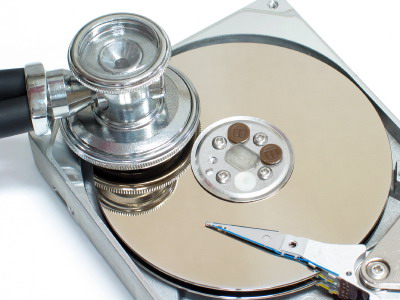
Flash memory gets its name due to his desire to move to the top of the memory cells are erased in a single action or "Flash".
Both NOR and NAND Flash memory were invented by Dr. Fujio Masuoka in the "Flash" 1984.The Toshiba recommended to eliminate the memory contents reminds a flash camera, and the name coined to express how fast you can remove the stain "in a heartbeat.
Flash memory is a type of nonvolatile memory that can be electrically erased and rewrite, which means it does not need power to maintain the information stored in the chip. In addition, flash memory offers fast read access time and better shock resistance than hard disks. These characteristics explain the popularity of flash memory for applications such as storage on battery-operated devices.
Flash memory is progress EEPROM (Electrically Erasable Programmable Read Only Memory) that allows multiple memory locations to be erased or written in one programming operation. Unlike EPROM (electrically programmable memory die) EEPROM can be programmed and erased multiple times electrically.
Normal EEPROM only allows location when you remove or written, meaning that flash can operate at higher speeds while using an effective system; to read and write in different places at the same time.
Regarding the type of logic gate used in each storage cell, Flash memory built in two varieties and named, NOR flash and NAND flash.
Flash memory stores one bit of information in a variety of transistors, called "cells", but in a flash memory device was recently referred to as the device level with some cells can store more than one bit per cell depending on amount of electrons placed on the floating gate cells.
NOR flash that was developed by Intel in 1988 with unique features and take a long time to write and erase endurance cycles ranging from 10,000 to 100,000 makes it suitable for storing program code, which is made frequently updated digital cameras and PDAs. Though, later cards demand moved towards the cheaper NAND flash memory; NOR-based flash, so far the source of all removable media.
Followed in 1989 Samsung and Toshiba form NAND flash with higher density, lower cost per bit then NOR Flash with faster erase and write times, but provides access to sequence data, not random like NOR Flash, NAND, which makes it suitable for devices mass storage such as flash memory cards.
Moreover, flash memory is not practical to random access memory (RAM) RAM should be addressed at the byte (not the block) level. Therefore, it is more widely used as the hard disk and RAM. Because some uniqueness, which is used with a specially designed system to write a file that expands the media and deal with the long erase times of NOR flash blocks.
While you can read or write one byte at a time in a random access fashion, limitation of flash memory, which must be eliminated "block" at a time. Block back deleted, every byte in the block can be programmed. However, after a byte has been programmed, it can not be changed again until the entire block has been removed. In other words, (specifically NOR flash) offers random access memory and flash programming operations, but can not offer random-access rewrite or erase.
This effect was partially offset by a puck firmware or file system drivers by counting the writes and dynamically remapping blocks in order to spread write operations between sectors, or by write verification and remapping "sector replacement in case of misspelling.
Due to the use of the insulating oxide layer around the charge storage devices, flash memory types erode after a number of erase functions ranging from 100,000 to 1,000,000, but it can be read over and over again. flash memory cards easily rewritten and replaced without warning with a high probability that the data is overwritten and therefore lost.
Despite the clear advantages, worse may occur due to system failure, battery failure, accidental deletion, reformatting, power surges, faulty electronics and corruption caused by hardware failure or software malfunction; The following data may be lost or altered.
Recovery data from flash memory is the process of restoring data from primary storage media when it can not be accessed normally. Data Recovery Service is a flash memory file recovery flash drive that restores all corrupted and deleted photos, even if the memory card has been formatted.
















